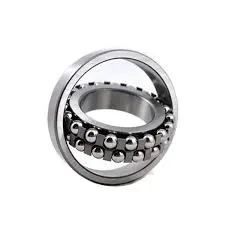
Dec . 05, 2024 07:19 Back to list
Understanding the Components of Tapered Roller Bearings and Their Functions
Understanding Taper Roller Bearing Parts
Taper roller bearings are a critical component in a vast array of machinery and vehicles, known for their ability to support both radial and axial loads. These bearings utilize conical rollers and raceways to provide a unique driving mechanism that enhances performance and durability. In this article, we’ll delve into the various parts that make up a taper roller bearing and their significance in the overall functionality of the bearing.
1. Inner Race
The inner race, or the cone, is the hub of the taper roller bearing. It features conical grooves that accommodate the tapered rollers. The design allows for a snug fit of the rollers, ensuring that they can handle radial loads effectively. The inner race is typically mounted onto the shaft, enabling it to rotate along with the shaft.
2. Outer Race
The outer race, known as the cup, is a counterpart to the inner race and forms the outer boundary of the bearing. Like the inner race, it also features a conical shape but is larger in diameter to allow for the accommodation of the tapered rollers. The cup is fixed in the housing, while the inner race rotates, providing stability and supporting the axial loads.
3. Tapered Rollers
The tapered rollers are the key components that allow taper roller bearings to function effectively. These rollers have a conical shape, which facilitates the distribution of load across a larger surface area. This design minimizes wear and tear and allows the bearing to handle both radial and thrust loads. The angle of the taper plays a crucial role in the bearing's performance; it must be manufactured with precision to ensure smooth and efficient operation.
taper roller bearing parts name

4. Cage
The cage, also referred to as the separator, plays an essential role in maintaining the proper spacing between the tapered rollers. It prevents roller-to-roller contact, which can lead to increased friction and heat generation. The cage also aids in the assembly and disassembly of the bearing. Made from materials such as steel or plastic, the design of the cage is critical for the bearing's overall performance, as it ensures the rollers remain aligned and secure.
5. Seals and Shields
Seals and shields are components that protect the bearing from contaminants such as dirt, dust, and moisture. They are vital in prolonging the lifespan of the bearing by preventing foreign particles from entering the bearing assembly. Depending on the application, different types of seals can be employed, including rubber seals or metal shields. Proper sealing is crucial in high-speed applications, where lubricants must be retained to reduce friction and wear.
6. Lubrication
While lubrication is not a physical part of the bearing, it is an essential aspect of the bearing's operation. Proper lubrication reduces friction between the moving parts and minimizes wear. There are various methods of lubrication, including grease filling and oil lubrication. The choice of lubricant depends on the operating conditions, including speed and temperature. Proper maintenance of lubrication can significantly enhance the performance and lifespan of taper roller bearings.
Conclusion
Taper roller bearings are indispensable in many sectors, including automotive, aerospace, and industrial machinery. Understanding the components—inner race, outer race, tapered rollers, cage, seals, and lubrication—helps in recognizing their intricate design and functionality. Each part plays a vital role in ensuring the bearing operates smoothly and efficiently under various conditions. By ensuring proper maintenance and timely replacement of these components, users can enhance the performance of their machinery, leading to increased productivity and reduced downtime. As machinery continues to evolve, the role of taper roller bearings will undoubtedly remain significant in supporting modern engineering and technology.
Latest news
-
Premium Deep Groove Ball Bearings | High Speed & Reliability
NewsAug.29,2025
-
Durable Scaffolding Clamps - Secure & Reliable Tube Connectors
NewsAug.28,2025
-
Common Failures in Thrust Ball Bearings and Solutions
NewsAug.22,2025
-
How Tapered Roller Bearings Can Take Shock Loads
NewsAug.22,2025
-
Angular Bearings in High-Precision Spindles
NewsAug.22,2025
-
The Impact of Misalignment on Cylindrical Roller Bearing Performance
NewsAug.22,2025
